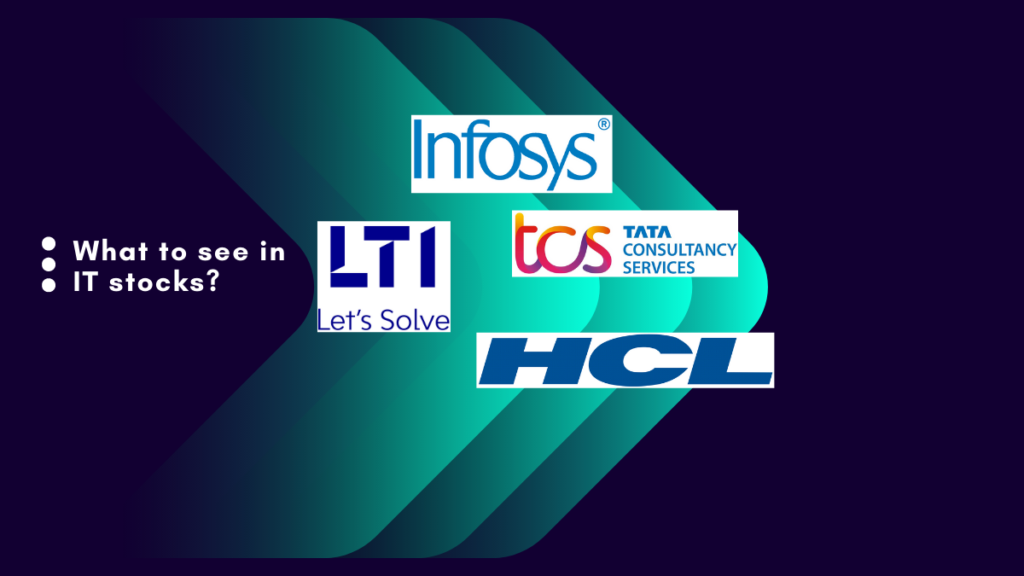IT Industry in India is undergoing rapid evolution and is changing the shape of Indian business standards. This sector includes software development, consultancies, software management, online services and business process outsourcing (BPO).
The IT industry is one which is not limited to software development alone. Technology can be applied in libraries, hospitals, banks, shops, prisons, hotels, airports, train stations and many other places through database management systems, or through custom-made software as seen fit.
Among other sectors, the IT sector in India has been driving growth for the last decade. And moreover the sector has the potential to continue doing so for the next couple of years.
India has become the digital capabilities hub of the world with around 75% of global digital talent present in the country.
(A) Features of Indian IT Industry
(i) Growing Industry
India’s IT industry contributed around 7.7% to the country’s GDP and is expected to contribute 10% to India’s GDP by 2025. As of FY20, the IT industry employed 4.3 million people. IT industry is fueling the growth of start-ups in India with presence of around 5,300 tech start-ups in India.
(ii) Cash Rich Sector
IT Sector is one of the cash rich sectors in the economy. Unlike capital intensive companies, IT companies do not require much capital expenditure on plant & machinery. Therefore, the IT companies are mostly debt free as they do not need to spend much on capacity. Their main assets are the “employee strength”. Moreover, due to lockdowns currently during Covid-19 pandemic, most of the employees are working offsite. It saved huge cost of IT industry players, as a result the earning grew at a higher rate.
(iii) Most lucrative sector for investments
IT industry in India attracted cumulative foreign direct investment (FDI) worth US$ 62.47 billion between April 2000 and September 2020. The sector ranked 2nd in FDI inflow as per the data by Department for Promotion of Industry and Internal Trade (DPIIT).
(iv) Cost effective
Indian IT companies are more cost effective as compared to US and UK IT Industry. India has a low-cost advantage by being 5-6 times inexpensive than the US. Thus Indian IT companies are becoming a preferred destination for IT & BPM services in the world. It continues to be a leader in the global sourcing industry with 55% market share of the US$ 200-250 billion global services sourcing business in 2019-20 (Source: IBEF).
(B) Key Parameters for Analysis of IT Services Companies

These are some the parameters which differentiate IT companies from each others. Moreover, helps the investor to make good investing decision.
1. Onsite and Offshore mix
The onsite and offshore revenue mix refers to the location of employees of the company. If the number of onsite employees are more, the employee cost will be more. This is because of higher travel & visa expenses for employees working close to clients. Therefore, lesser the profit margins. On the other hand if the employees work offsite, the employee cost reduces in comparison.
But it must be taken into consideration that the company with most employees in foreign country will have higher growth opportunities. This is because of better quality of work as well as repeat client business.


2. Employees as assets for IT Industry
Employees are the major assets of IT industry players. IT companies dependent upon their employees for growth and profitability. Therefore, efficient management of employees is one of the most essential activities for any IT Company.
Employee Utilization and attrition rate are the basic measures which can certainly help to understand the employee productivity of the IT company.
(i) Employee Attrition
Lesser the employee attrition rate, more beneficial to the company. As this reduces training cost for new employees because existing employees already know the working of the company as well clients’ operations. So if the training and recruitment cost of new employees will be less, this will add to profitability of IT companies.
Checkout the change in attrition rate of few of the IT industry players:


(ii) Employee Utilization Rate
The employee Utilization rate is the amount of time one employee spends working on client-facing tasks vs. the total amount of time that an employee is available to work.
The IT Companies certainly have to maintain a fine balance between the no. of employees working on customers projects and the no. of spare employees on Bench.


A high utilization rate brings higher margins due to better efficiency. But it should be noted that very high utilization burns out employees and also reflects diminishing bench strength. IT service providers with very high existing utilization will struggle to serve newer engagements as they would not have people to deploy.
This also impacts client confidence in their ability to deliver services to them. On the other hand, IT companies’ ability to afford lower utilization rates is a key factor to attract global business. Lower utilization means higher agility to handle surges and ensure continuity on delivery, but very high utilization hurts the industry’s long term competitive edge. Consequently, a companies try to maintain a reasonable balance.
(iii) Revenue Per Employee
Revenue per employee is a measure of total revenue for the last twelve months/ Current number of full time employees. This ratio is used to compare the companies in same industry. It is the indicator of employees productivity. As higher the ratio higher will be the operating efficiency of the company.
Infosys revenue per employee saw marginal growth and now stands at $54,000 on average between FY18 and FY20. TCS revenue per employee metric stood at $49,000. HCL revenue per employee stood on average $65,000 after an 8 percent increase compared to FY17.
3. Business Diversification
Diversification refers to the diversification of revenue in terms of different countries/markets as well as different customer. Like any other industry, diversification of revenue helps an IT company to survive a downturn in any particular geography/country or industry.




Most of the revenue of Indian IT Companies generates through International markets. Thus, IT companies mainly depend upon International Economies for the revenue. Americas are the major source of revenue and Europe also contributes good share to revenue. Thus we can say that Indian IT companies diversify their business globally to be least affected by the economy of one country.
However, various international immigration laws affect the earnings of the company. For Instance, many Indian IT companies’ employees travel to US. For that they require H1B visas by US government. Any restrictive laws can impact the businesses for Indian IT companies.
4. Nature of Contracts
(i) Time and Material Contracts
In Time and material contracts, the customer pays the IT Company based on the amount of time taken to complete the project and the amount of material (number of employees) used to complete the project. It means that the IT Company charges the customer based on the number of employee hours consumed to complete the project.
(ii) Fixed Price Contracts
In a fixed-price contract, the customer assigns a value to the work to be done by the IT Company as a project. After giving the order to the IT Company, the customer is not concerned about how many employees the IT Company has employed to complete the work. In fixed-price contracts, the customer is concerned with the quality of the work and the timeline for completion of the work.


There is very less possibility for IT company making loss in time and Material contracts. On the other hand, in the Fixed Price contracts if the IT company fails to complete the contract they have to suffer loss. We can say that time and material contracts are risk safe but have low profitability. On the other hand, fixed price contracts have high profitability but riskier.
5. Business Segments
The IT companies should not be dependent upon one particular sector. Thus the diversification among various verticals is very important. As it helps the company to generate the revenue from different sectors. Therefore, the growth and decline in one particular sector will have least impact on overall profitability.

Retail – Includes enterprises in Retail, Consumer Packaged Goods and Logistics
COM – Includes enterprises in Communication, Telecom OEM and Media
EURS – Includes enterprises in the Energy, Utilities, Resources and Services
MFG – Includes enterprises in Manufacturing
Hi-Tech – Includes enterprises in Hi-Tech
LS – Includes enterprises in Life Sciences and Healthcare

Retail – Includes Retail & Consumer Business
COM – Includes Communication ,Media &Technology
MFG – Includes Manufacturing sector

MFG – Includes manufacturing services
EU – Includes Energy & Utilities
6. Client Concentration
Client Concentration refers to the dependency upon a few big clients. It is a red signal for an IT company if the companies’ business is dependent upon a few (2-3) major clients because if the any of such clients do not give any business to the company in future, the company will suffer huge losses.
7. Foreign Exchange Risk Management
Indian IT companies earn most of their revenue from customers located outside India. They earn this revenue in currencies like the US Dollar, the Euro etc. In such cases, the impact of the movement of the Indian Rupee against foreign currencies may play a major factor in increasing or decreasing the earnings of the IT Company in Indian Rupees even if the IT Company has earned the same revenue in US Dollars or Euro. Thus it is very important for IT companies to manage the currency risk as the appreciation and depreciation of rupee will directly affect the profitability.
8. Merger and Acquisitions
In order to strengthen their advantage further, the IT companies are continuously lookout for skills which can further improve their value addition to customers. Large IT companies many times acquire a small IT company, which has mastered a unique technology/skill, which can add solution to their clients. The great associations which directly relate to the company’s current business lines always add value for the clients because of synergy.
However, very high merger & acquisition activity opens routes for malpractices like syphoning of money by marking up the price of acquisition or other accounting frauds.


Drop us your query at – info@pawealth.in or Visit pawealth.in
References: Annual Reports, News Publications, Investor Presentations, Corporate Announcements, Management Discussions, Analyst Meets & Management Interviews, Industry’s Publications.
Disclaimer: The report only represents personal opinions and views of the author. No part of the report should be considered as recommendation for buying/selling any stock. Thus, the report & references mentioned are only for the information of the readers about the industry stated.





0 Responses